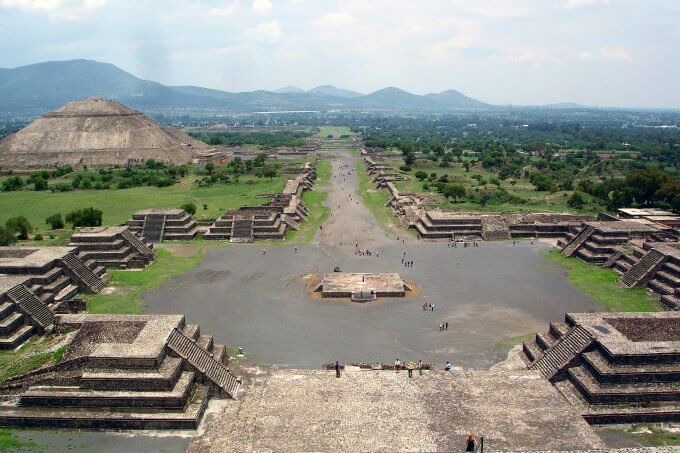Recently derived equations that describe development patterns in modern urban areas appear to work equally well to describe ancient cities settled thousands of years ago, according to a new study led by a researcher at the University of Colorado Boulder.
“This study suggests that there is a level at which every human society is actually very similar,” said Scott Ortman, assistant professor of anthropology at CU-Boulder and lead author of the study published in the journal PLOS ONE. “This awareness helps break down the barriers between the past and present and allows us to view contemporary cities as lying on a continuum of all human settlements in time and place.”
Over the last several years, Ortman’s colleagues at the Santa Fe Institute (SFI), including Professor Luis Bettencourt, a co-author of the study, have developed mathematical models that describe how modern cities change as their populations grow. For example, scientists know that as a population increases, its settlement area becomes denser, while infrastructure needs per capita decrease and economic production per capita rises.
Ortman noticed that the variables used in these equations, such as cost of moving around, the size of the settled area, the population, and the benefits of people interacting, did not depend on any particular modern technology.
“I realized that if these models are adequate for explaining what’s going on in contemporary cities, they should apply to any settlements in any society,” he said. “So if these models are on the right track, they should apply to ancient societies too.”
To test his idea, Ortman used data that had been collected in the 1960s about 1,500 settlements in central Mexico that spanned from 1,150 years B.C. through the Aztec period, which ended about 500 years ago. The data included the number of dwellings the archaeologists were able to identify, the total settled area and the density of pottery fragments scattered on the surface. Taken together, these artifacts give an indication of the total population numbers and settlement density of the ancient sites.
“We started analyzing the data in the ways we were thinking about with modern cities, and it showed that the models worked,” Ortman said.
The discovery that ancient and modern settlements may develop in similar and predictable ways has implications both for archaeologists and people studying today’s urban areas. For example, it’s common for archaeologists to assume that population density is constant, no matter how large the settlement area, when estimating the population of ancient cities. The new equations could offer a way for archaeologists to get a more accurate head count, by incorporating the idea that population density tends to grow as total area increases.
In the future, the equations may also guide archaeologists in getting an idea of what they’re likely to find within a given settlement based on its size, such as the miles of roads and pathways. The equations could also guide expectations about the number of different activities that took place in a settlement and the division of labor.
“There should be a relationship between the population of settlements and the productivity of labor,” Ortman said. “So, for example, we would expect larger social networks to be able to produce more public monuments per capita than smaller settlements.”
The findings of the new study may also be useful to studies of modern societies. Because ancient settlements were typically less complex than today’s cities, they offer a simple “model system” for testing the equations devised to explain modern cities.
“The archaeological record actually provides surprisingly clear tests of these models, and in some cases it’s actually much harder to collect comparable data from contemporary cities,” Ortman said.
Other co-authors of the study include Andrew Cabaniss of Santa Fe Institute and the University of North Carolina Chapel Hill and Jennie Sturm of the University of New Mexico.
The study is available at http://dx.plos.org/10.1371/journal.pone.0087902. Read the press release from the Santa Fe Institute at http://www.santafe.edu/news/item/bettencourt-ortman-plos-one-cities-on-spectrum.


